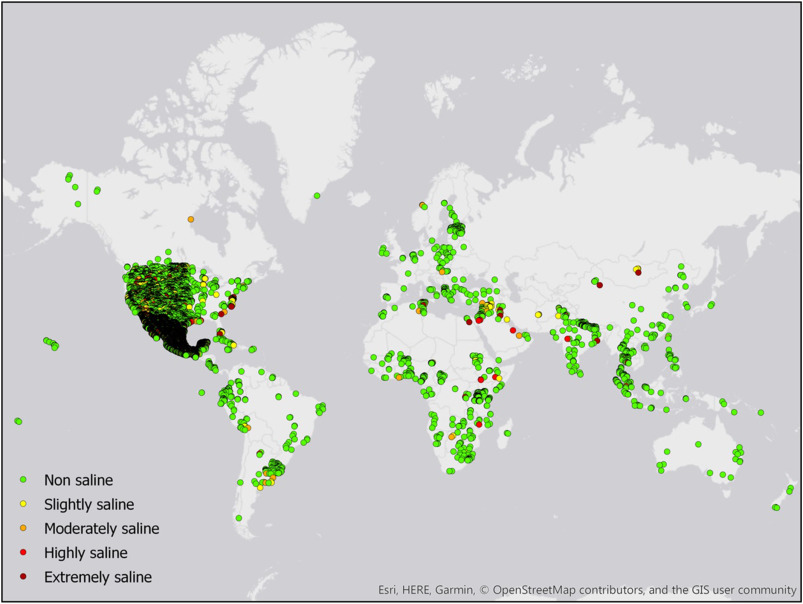Soil salinization and how farmers can overcome it
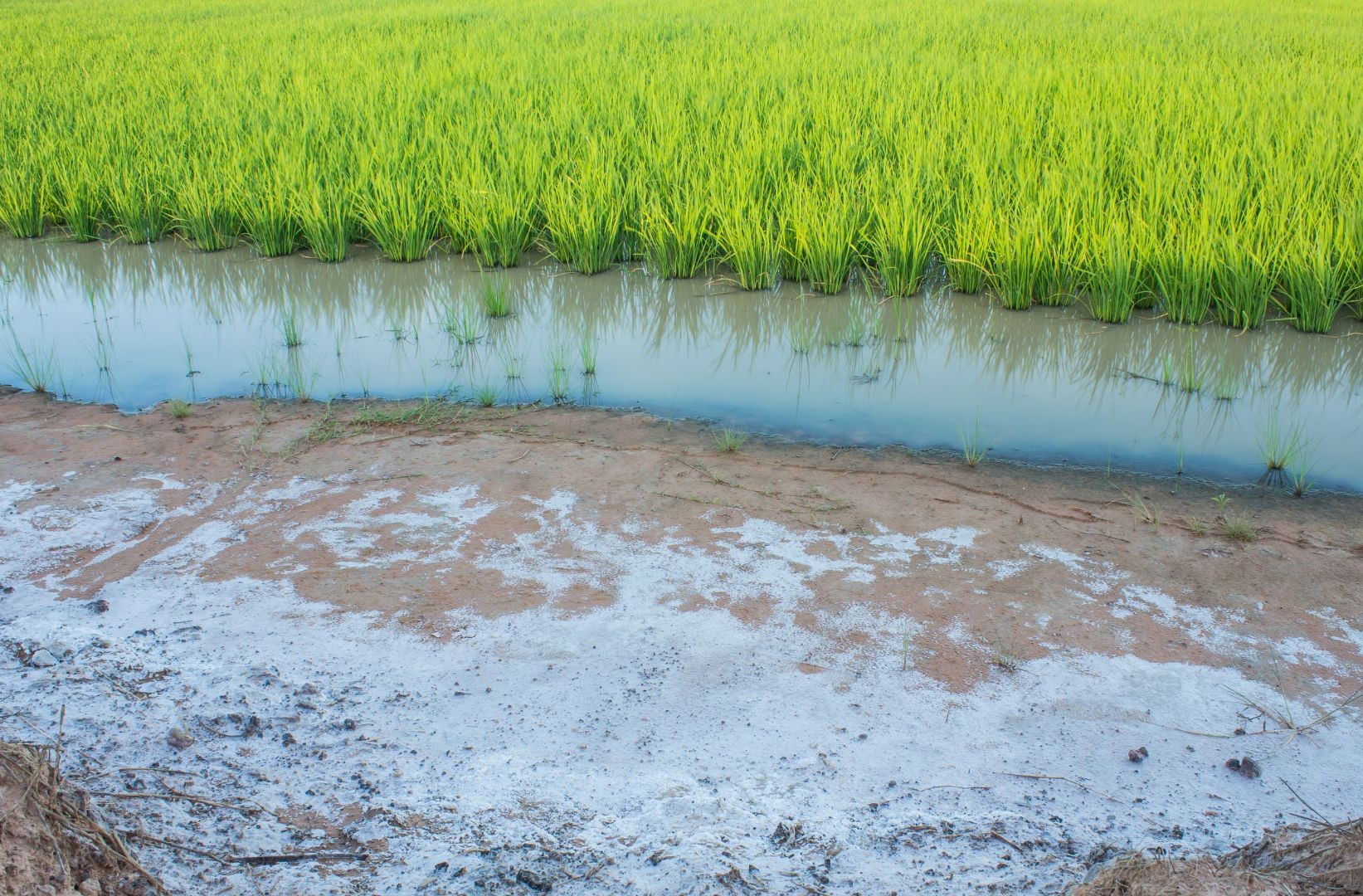
This post is also available in:
This post is also available in:
![]() Português (Portuguese (Brazil))
Português (Portuguese (Brazil))
Soil salinization decreases the agricultural production potential of up to 46 million ha per year (FAO).
In this post, we will further analyze:
- What is soil salinization
- The impact of soil salinization
- What can we do to improve our soils
Nowadays, the significant limitations to crop productivity on a global scale are:
- climate change
- environmental pressures
- intensified agricultural practices
- altered precipitation patterns
- suboptimal fertilizer usage
- diminished water resources
- declining soil fertility
Among the various environmental (abiotic) stressors, soil salinity emerges as a noteworthy consequence of climate change, impacting approximately 20% of cultivated lands and 33% of irrigated agricultural areas.
Picture 1: Global map demonstrating regions with soil salinization problems
What is soil salinization?
Soil salinization, alongside concerns related to water and environmental contamination, has arisen as a considerable menace to worldwide food security and the sustainability of agricultural systems in recent years. Salt stress arises from the excessive accumulation of soluble mineral salts within the soil, resulting in profound implications for soil fertility, structural stability, biodiversity, and, consequently, crop yield.
Soil salinity, characterized by the presence of soluble mineral salts in the soil (measured by volume or weight), along with sodicity (the concentration of Na+ ions), can exert adverse effects on nutrient acquisition by plants and various physicochemical properties of the soil, including its pH.
In plants, high salinity levels restrict the growth of both root and shoot systems, primarily by limiting water availability and micronutrient uptake, leading to cellular damage and alteration of several physiological processes.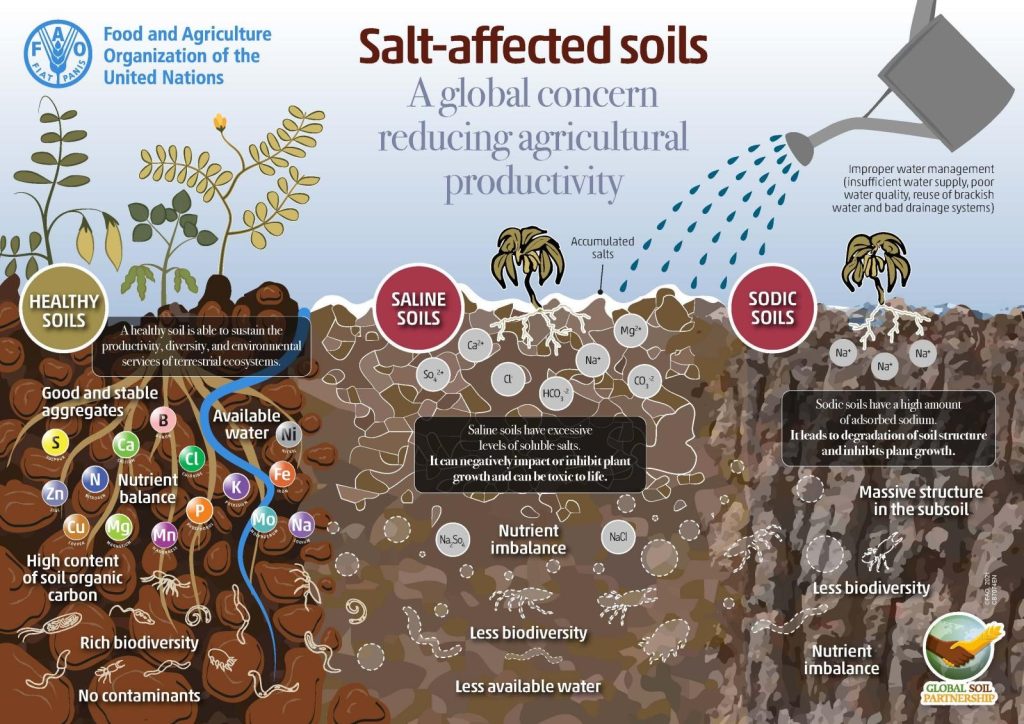
The impact of soil salinization on the crop – How are crop plants affected by high soil salinity levels?
The ramifications of soil salinization are observable in the field, often evident through uneven crop growth and the development of white salt deposits on the soil surface. Mild salinity issues are typified by a blue-green hue in growing plants. In cereal or forage crops inhabiting saline areas, barren patches and stunted plants may emerge. The extent and prevalence of barren patches (parts of the field with no vegetation) can indicate the salt concentration in the soil. In cases where salinity levels are not sufficiently high to cause barren patches, irregular vegetative vigor may manifest in crop appearance.
Moderate salinity, especially when uniformly distributed across the field, can frequently go unnoticed, as it does not result in overt damage beyond inhibited growth. Leaves of plants growing in saline-prone soils tend to be smaller and exhibit a darker blue-green coloration compared to regular leaves. Plants in salt-affected soils often resemble those experiencing moisture stress (drought). Specific element toxicities, such as marginal or tip burn of leaves, typically affect woody plants exclusively. At the same time, non-woody species can accumulate similar or greater levels of these elements in their leaves without displaying apparent harm.
How to handle soil salinity?
Addressing soil salinity is feasible without requiring prolonged periods and substantial financial investments. Potential solutions encompass:
- enhancing the efficiency of irrigation systems
- capturing and treating saline drainage water
- establishing desalination facilities
- augmenting groundwater recharge rates
- implementing mulches or cover crops to conserve water resources in crop cultivation (promising practice)
Although the wholesale translocation of soil is a costly and labor-intensive alternative, it remains a viable option.
The more advanced approach involves the development of genetically improved crops and other salt-tolerant varieties. However, this avenue of research is currently characterized by its complexity and controversy, resulting in the limited availability of such crops in substantial quantities.
What can we do to improve our soil?
Plant-associated microbes: A promising solution
In light of these challenges, the utilization of certain microorganisms inhabiting the plant rhizosphere or residing within halophytic plant roots, which also possess plant growth-promoting attributes, emerges as a promising strategy to enhance the adaptability of plants to salinity-induced stress conditions. These beneficial plant-associated microbes play a pivotal role in mitigating salt stress by producing:
- osmoprotectants
- antioxidants
- ACC deaminase enzymes
- hormones
- exopolysaccharides
- organic acids
- nitric oxide
- siderophores
At the same time, they can promote increased nutrient availability. Subsequent inoculation of crop plants with such salt-tolerant plant growth-promoting bacteria (PGPB) has been shown to enhance plant growth and crop yields in saline soils.
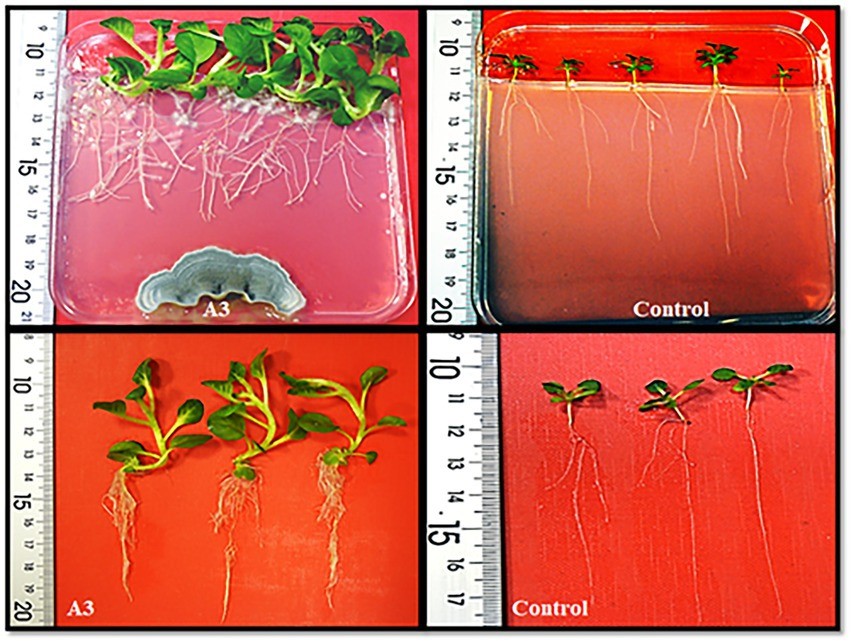
Picture 3: Penicillium promotes plant growth, enhances salt stress tolerance, and reduces chemical fertilizer inputs.
Biofertilizers, offering advantages such as improved soil fertility, enhanced nutrient availability, protection against soil-borne pathogens, heightened tolerance to biotic and abiotic stress, and reduced environmental pollution compared to chemical fertilizers, present a sustainable approach to soil improvement.
Penicillium, a soil fungus known for its beneficial effects on soil health, particularly concerning soil salinity mitigation in agriculture, deserves special attention.
Penicillium exhibits the following mechanisms in combatting soil salinity:
- Salt Tolerance: Penicillium can thrive in high-salinity conditions, rendering it a suitable candidate for addressing salinity-related challenges.
- Salt Exclusion: This fungus possesses the capacity to reduce the uptake of salts, including sodium and chloride, by plant roots, thereby alleviating the detrimental effects of salinity on plant growth.
- Enhanced Nutrient Availability: Soil salinity often leads to imbalances and reduced availability of essential nutrients for plant growth. Penicillium can solubilize and mobilize nutrients in the soil, making them more accessible to plants and ameliorating nutrient deficiencies caused by salinity stress.
- Enhanced Plant Growth: By mitigating the adverse impacts of soil salinity, Penicillium promotes improved plant growth and development, enhancing overall physiological processes in plants and leading to increased yields, heightened stress tolerance, and more efficient resource utilization. The interaction between plant-beneficial microorganisms and host plants yields multiple benefits, including enhanced stress tolerance, root modifications, improved soil quality attributes, enhanced nutrient uptake, and the suppression of pathogens.
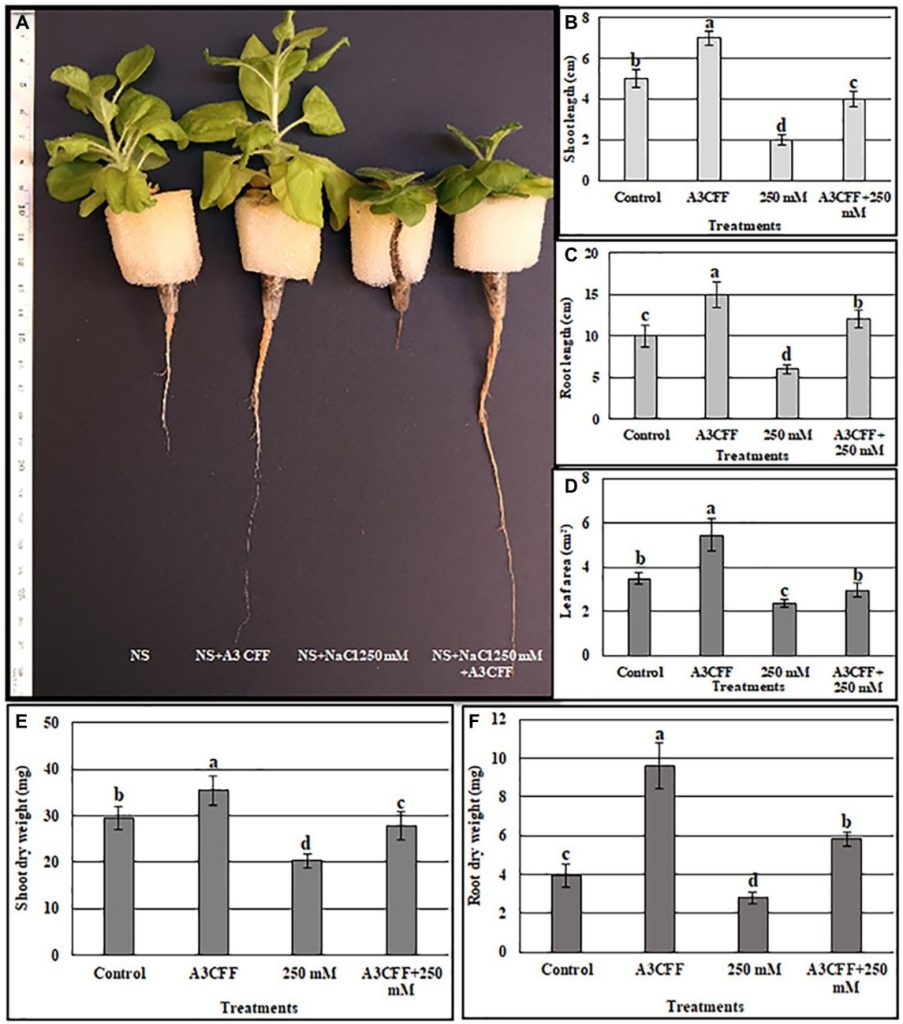
Picture 4. Evaluation of the ability of A3 CFF (Penicillium) to alleviate salt stress when added at 1:50 dilution to NS (control).
Picture Explanation
(A) plant morphology photographed after 1 month of treatment,
(B) Shoot length,
(C)Root length,
(D) Leaf area,
(E)Shoot dry weight,
(F) Root dry weight of tobacco seedlings grown in
NS (control),
in NS with Penicillium (A3CFF),
with NaCl (250 mM),
with 250 mM NaCl and Penicillium, (A3CFF + 250 mM).
Different letters on bars represent the significant values according to Duncan’s test (p < 0.05).5
It is important to note that the effectiveness of Penicillium in addressing soil salinity may vary depending on specific soil and environmental conditions. Therefore, it is advisable to consult with agricultural experts or local extension services for guidance on its application and suitability for a particular farming system.
Sustainable solutions, such as agricultural microbes in Integrated Soil Fertility Management, natural plant protection, and bio-fertilizers, provide a powerful tool for natural and sustainable agriculture, ensuring quality yield and the health of all players involved in a safer food chain.
References
Main contents : Vassileva M, Martos V, Del Moral LFG, Vassilev N. Effect of the Mode of Fermentation on the Behavior of Penicillium bilaiae in Conditions of Abiotic Stress. Microorganisms. 2023 Apr 19;11(4):1064. doi: 10.3390/microorganisms11041064. PMID: 37110487; PMCID: PMC10143995.
1) doi: 10.1126/science.aag0654
2) Al-Busaidi A.S., Cookson P. Salinity-pH relationships in calcareous soils. Agric. Mar. Sci. 2003;8:41–46. doi: 10.24200/jams.vol8iss1pp41-46. [CrossRef] [Google Scholar]
4) Sanjuán J., Nápoles M.C., Pérez-Mendoza D., Lorite M.J., Rodríguez-Navarro D.N. Microbials for Agriculture: Why Do They Call Them Biostimulants When They Mean Probiotics? Microorganisms. 2023;11:153. doi: 10.3390/microorganisms11010153. [PMC free article] [PubMed] [CrossRef] [Google Scholar]
5) Tarroum M, Romdhane WB, Al-Qurainy F, Ali AAM, Al-Doss A, Fki L, Hassairi A. A novel PGPF Penicillium olsonii isolated from the rhizosphere of Aeluropus littoralis promotes plant growth, enhances salt stress tolerance, and reduces chemical fertilizers inputs in hydroponic system. Front Microbiol. 2022 Oct 27;13:996054. doi: 10.3389/fmicb.2022.996054. PMID: 36386667; PMCID: PMC9648140.
More on soil salinity https://www.fao.org/global-soil-partnership/areas-of-work/soil-salinity/en/
Further reading
Circular agriculture – The soil microbiome and the advantage of using recycled nutrients



















